A winter snowfall can transform the landscape into a serene, snow-covered wonderland, offering a unique opportunity to observe and appreciate the natural world. As you walk through this tranquil setting, the fresh snow acts as a canvas, capturing the tracks of various wildlife. Join me in exploring the fascinating tracks I encountered on my most recent winter walk.
Squirrels
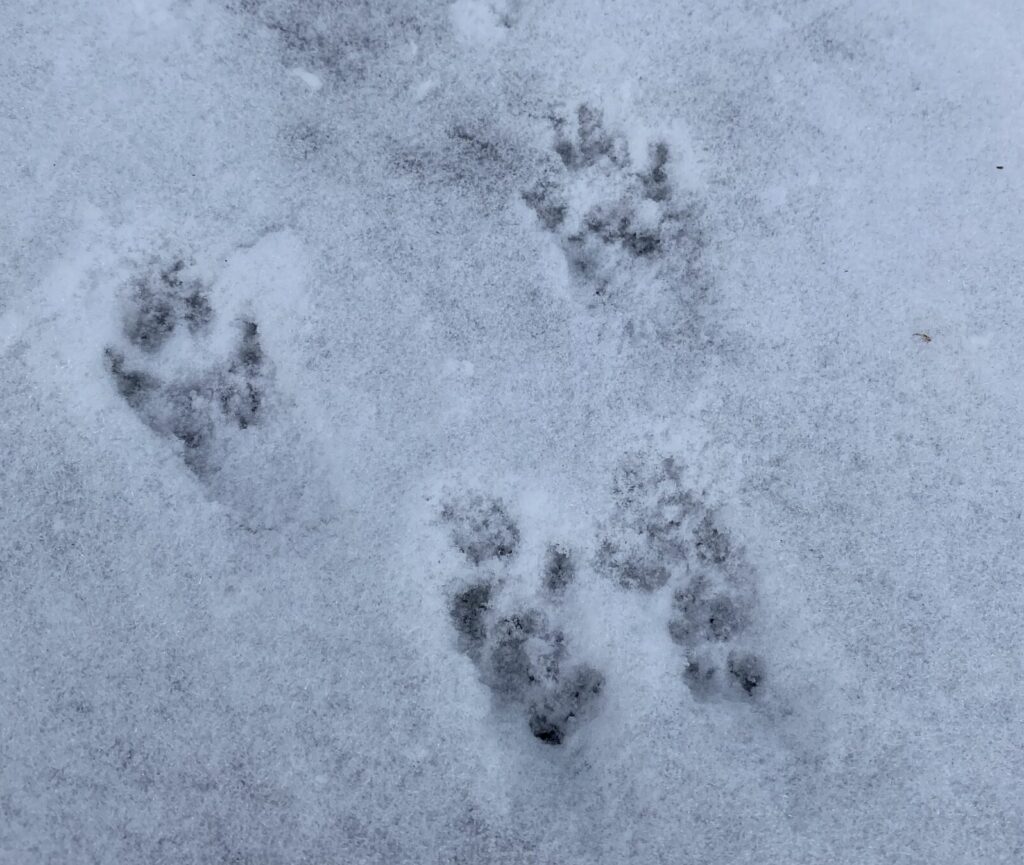
Many of our squirrels here in New England are active throughout the winter, and their tracks are often found throughout all kinds of habitats. Their prints show four toes on the front feet and five on the hind feet, with the hind prints typically landing ahead of the front prints due to their leaping movement. You might also notice small disturbances in the snow where they have dug to retrieve buried nuts. While these industrious animals are a reminder of the forest’s hidden activity even in the coldest months, their cousins the chipmunk spend most of the winter in their underground burrows in an intermittent hibernation called torpor. While they will awake every so often, as long as their burrow remains stocked with food supplies they’ve collected for the winter, they will stay underground.
Canada Geese
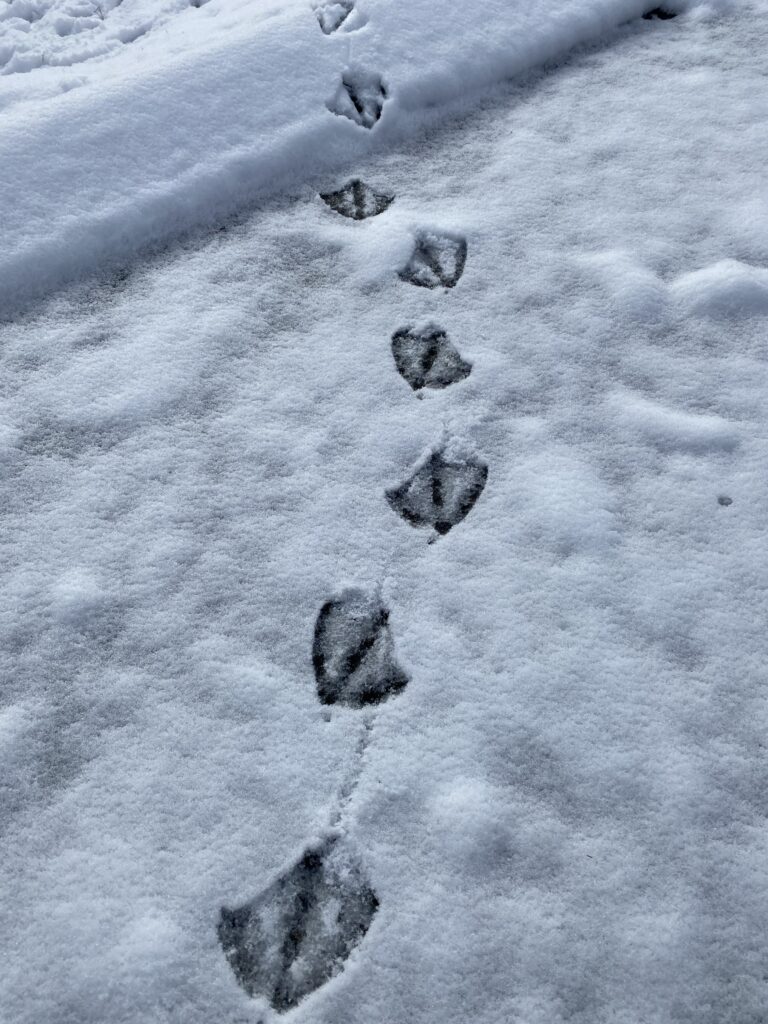
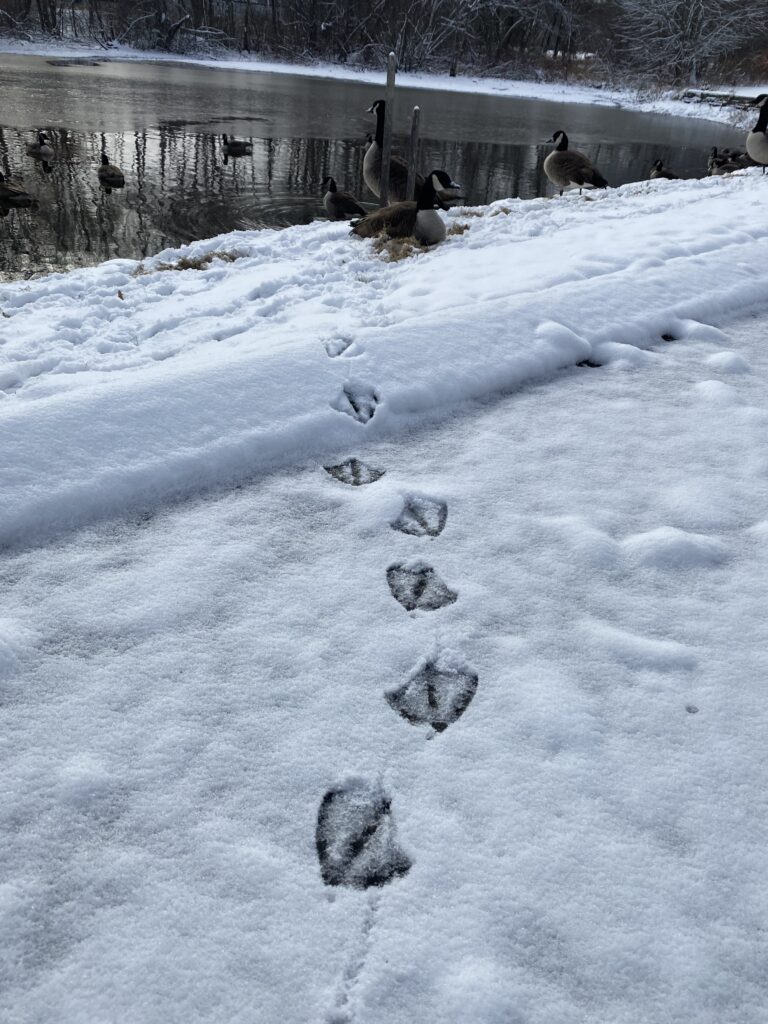
While many birds migrate to warmer climates, some Canada geese remain in northern areas during the winter. Their tracks are easily recognizable, with webbed feet leaving a distinct pattern in the snow. You can often find their tracks near open water sources, such as rivers, lakes, or ponds, where they gather in flocks and greet those walking by with a noisy “honk”.
Coyotes
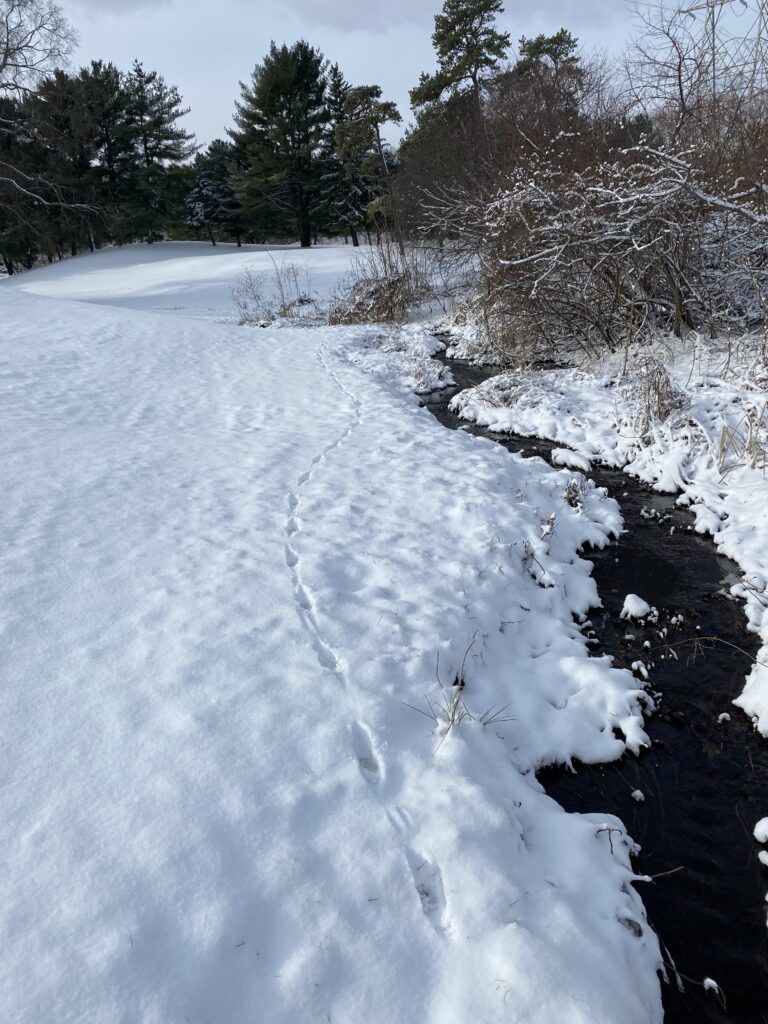
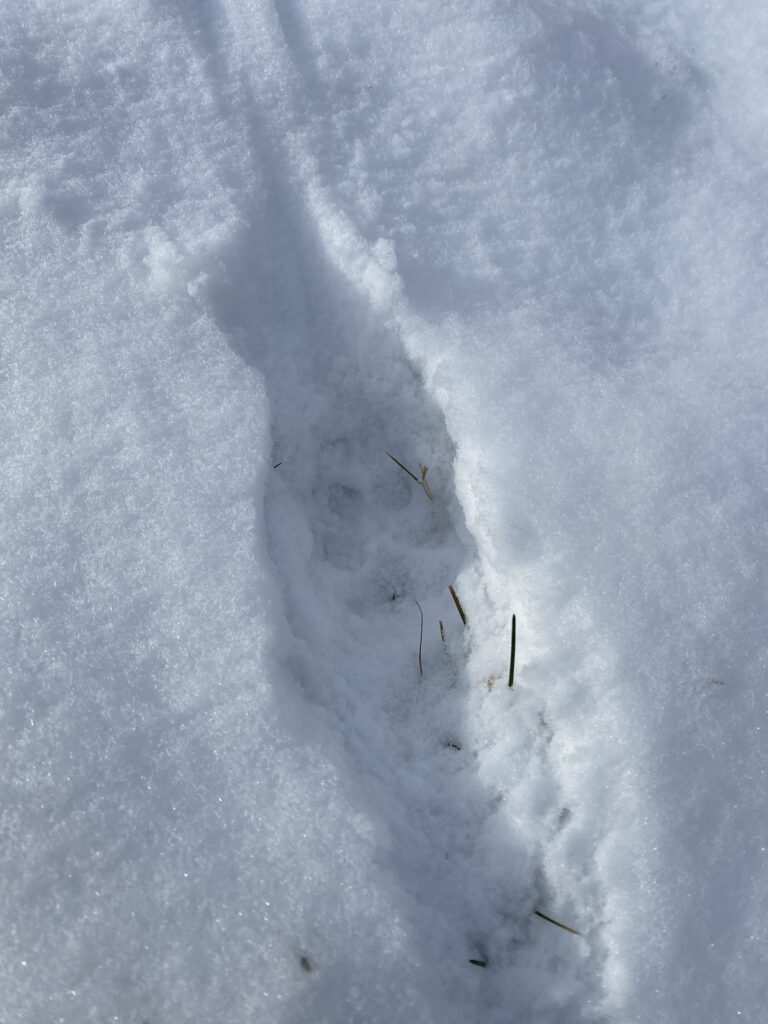
Coyotes are elusive and often nocturnal, but their tracks can reveal their presence. Their prints resemble those of a domestic dog but are more elongated and often show a more direct, purposeful path. Coyotes’ tracks typically display four toes with visible claw marks. Finding coyote tracks can be thrilling, as it hints at the presence of these adaptable predators. Look for their tracks in open fields, along forest edges, or near water sources where they hunt for prey.
Deer
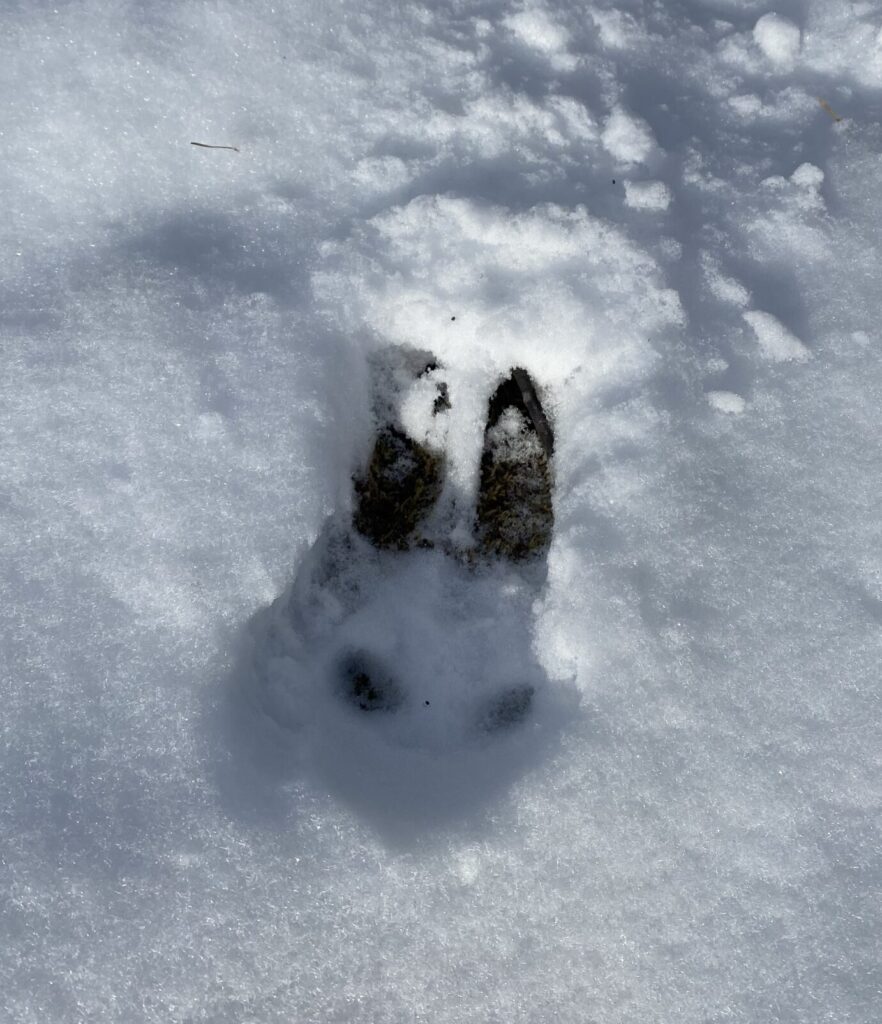
Deer tracks are a common and exciting find in the winter landscape. Their tracks are almost heart-shaped, with two distinct hooves that leave a clear imprint in the snow. Deer often travel in groups, so you might find multiple sets of tracks together, indicating a herd has passed through.
Walking in a winter wonderland offers a peaceful escape and a chance to connect with nature. Each set of tracks tells a story of survival, adaptation, and the intricate web of life that continues even in the harshest conditions. As you explore, take a moment to appreciate the beauty and resilience of the wildlife around you. Happy tracking!
